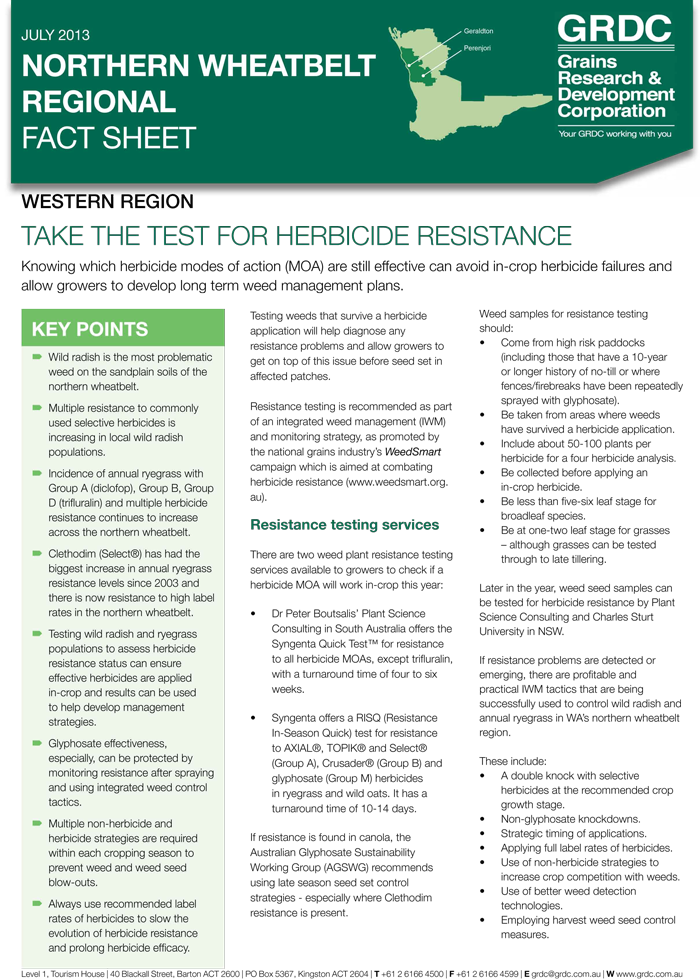Take the test for herbicide resistance
Take the test for herbicide resistance
Published: 4 Jul 2013

Knowing which herbicide modes of action (MOA) are still effective can avoid in-crop herbicide failures and allow growers to develop long term weed management plans
Key points:
- Wild radish is the most problematic weed on the sandplain soils of the northern wheatbelt.
- Multiple resistance to commonly used selective herbicides is increasing in local wild radish populations.
- Incidence of annual ryegrass with Group A (diclofop), Group B, Group D (trifluralin) and multiple herbicide resistance continues to increase across the northern wheatbelt.
- Clethodim (Select®) has had the biggest increase in annual ryegrass resistance levels since 2003 and there is now resistance to high label rates in the northern wheatbelt.
- Testing wild radish and ryegrass populations to assess herbicide resistance status can ensure effective herbicides are applied in-crop and results can be used to help develop management strategies.
- Glyphosate effectiveness, especially, can be protected by monitoring resistance after spraying and using integrated weed control tactics.
- Multiple non-herbicide and herbicide strategies are required within each cropping season to prevent weed and weed seed blow-outs.
- Always use recommended label rates of herbicides to slow the evolution of herbicide resistance and prolong herbicide efficacy.
Want to link to this factsheet?
Use www.grdc.com.au/GRDC-FS-TestForHerbicideResistance to ensure your link remains current and up-to-date!
Region West, North, South
Region: West
